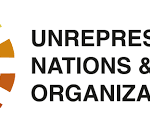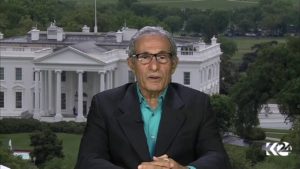It offers a vivid first-person narrative of how the zealots of the Islamic republic created what has become a nightmare for the Iranian people. By the author’s account, the cruelty and intolerance didn’t begin with President Mahmoud Ahmadinejad. They have been unfolding for three decades.
By David Ignatius
Sunday, April 11, 2010; B01
A TIME TO BETRAY
The Astonishing Double Life of a CIA Agent Inside the Revolutionary Guards of Iran
By Reza Kahlili
Threshold. 340 pp. $26
How true does a “true story” have to be? This question immediately confronts a reader of “A Time to Betray,” by the pseudonymous Reza Kahlili.
The book opens with this encompassing disclaimer: “This is the true story of my life as a CIA agent in the Revolutionary Guards of Iran; however, every effort has been made to protect my identity (Reza Kahlili is not my real name), my family, and my associates. To do so, it was necessary to change all the names (except for officials of the Islamic Republic of Iran) and alter certain events, chronology, circumstances, and places.”
If we cannot depend precisely on the who, what, where or when in a nonfiction memoir, then what do we have? You don’t need to be a professional skeptic to wonder if the basic claim of the book — that the author was a CIA mole inside Iran’s fearsome Guard — is accurate.
So I did some checking. And I am happy to report that the author did indeed have a secret relationship with the CIA. That’s a relief, because the story he tells — of the Iranian revolution and how he came to despise it — is genuinely powerful. It offers a vivid first-person narrative of how the zealots of the Islamic republic created what has become a nightmare for the Iranian people. By the author’s account, the cruelty and intolerance didn’t begin with President Mahmoud Ahmadinejad. They have been unfolding for three decades.
Since the bona fides of “Kahlili” are crucial to the credibility of this story, let me share some detective work: Three former CIA officers who ran Iranian operations in the ’80s and should have been knowledgeable said they had never heard of such a significant penetration of the Guard during this period. Maybe the case was super-restricted; maybe it was seen as relatively low-level. I can’t say.
A current U.S. government official, however, did vouch for Kahlili’s role as a spy. “I can’t confirm every jot and tittle in the book, but he did have a relationship with U.S. intelligence,” the official said.
I spoke with Kahlili’s lawyer, too, who told me that the book was “submitted for prepublication review” at a certain unnamed U.S. government agency and that this agency confirmed that Kahlili did have an operational relationship. Eventually, I found one of Kahlili’s former case officers, who described him as “legit” and “a very brave guy.”
And finally I talked with Kahlili himself. He was using a Darth Vader-style voice modulator, which seemed a little silly since he was calling from California. But I guess ex-spies are entitled to their paranoia, not to mention their publicity stunts. He offered more details that reinforced the integrity of the book.
What truly makes this story believable is the character of the narrator. Kahlili is a kind of upper-middle-class Iranian Everyman. He begins the story as a beer-drinking, girl-chasing Iranian student in America during the late 1970s. He is drawn into the radical cause via the student movement, embraces his Muslim faith and returns home just after the 1979 revolution that toppled the shah and installed Ayatollah Khomeini. He describes a “brief, shining moment” under Khomeini’s banner that felt to him like “the beginning of a Persian Renaissance.”
Kahlili’s companions on this revolutionary journey are two childhood friends, whom he calls “Naser” and “Kazem.” They are all swept up by the ayatollah’s fervor, but Naser and Kazem are opposing poles on which the story turns. Naser is a secular, idealistic fellow, and he moves toward the leftist organization known as the Mujaheddin, which becomes a bitter antagonist of the regime. Kazem is a deeply religious man who joins the Revolutionary Guard and rises steadily in its intelligence operations, pulling the author with him.
The crisis comes when Naser and his younger sister are arrested, brutally tortured and finally killed. Kahlili is honest enough to see that this is a perversion of the revolutionary ideals he has been fighting for — and he swears revenge. He takes it in a way that only a very brave person would dare, by contacting the CIA during a trip to America and offering to spy for the United States.
One of the strengths of this book is that it makes the author’s decision to betray his country — or, more properly, the people who are running it — seem like a morally correct and laudable action. Indeed, people in the Iranian operations division at the CIA should welcome “A Time to Betray” as a virtual recruitment poster. Kahlili meets a series of smart and sensitive case officers; he’s given a code name (in the book it’s “Wally,” which has a ludicrous ring, but maybe it was real); he’s taught secret writing and other tradecraft to disguise his communications as ordinary letters; and then he’s sent back into Iran as a CIA spy.
I won’t spoil the book by telling how the story evolves, but it’s a good espionage yarn. I have no idea what Kahlili left out in the telling, but his putative intelligence reports, which he prints in italics, seem incredibly squishy. If that’s all the poop he provided, no wonder others in the agency didn’t hear about him.
One detail that is entirely credible is how little the CIA seems to know about what’s going on inside Iran. Talking with his first case officer, “Steve,” the Iranian observes: “I didn’t realize until Steve started debriefing me how uninformed the U.S. was about the ayatollah’s activities in the Middle East.” The agency doesn’t seem to have known about the scope of the Guard’s activities or the extent of its contacts with the Soviets, for example.
At one point in the mid-1980s, Kahlili worries that Iranian intelligence operatives are wise to his encoded postal messages. The book should have mentioned that by the late 1980s, the Iranians had noticed similar letters going to postal addresses in Europe, and a whole network of spies was rolled up, with disastrous consequences. The Iranians certainly know that history, as do some readers of American newspapers, which have reported the mail screw-up in detail; so, I’m sure, does Kahlili. Leaving it out of this book weakens its authority.
As the tale progresses, we realize we are reading not so much a spy story as a national tragedy. The passionate idealism and yearning for democracy that gave birth to the Iranian revolution are perverted, year by year. Kahlili’s disgust and remorse compelled him to take action, but America mostly sat on its hands. “The West needs to do something,” he tells one of his case officers in the mid-’80s. “If we allow the Guards to go unchecked, the consequences could be devastating for the region — and the world.”
Kahlili had that right, and a lot of other things as well. After finishing this book, this reader recalled a line from Arthur Miller’s play, “After the Fall,” which asked: “Why is betrayal the only truth that sticks?” I wish we could be more certain about the details in this story, but even so, the basic message sticks hard and true.
David Ignatius is a columnist and associate editor for The Washington Post. His new novel about Iran, “The Increment,” is out in paperback this month.
Source: Washington Post
















+ There are no comments
Add yours